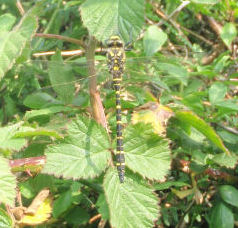I recently had a brief interlude in my Welsh ramblings and spent a little time in California. Big Basin State Park, on a sunny and still day is silently awesome. The occasional birdsong or the tapping of woodpeckers sounded crystal clear in the quiet forest.
The great coast redwoods, Sequoia sempervirens, can be two to three thousand (yes thousand) years old and at over 200 feet are the tallest trees in the world. Older and taller than any tree in a welsh hedge.
The forest edges are somewhat hedgerow-like and make sheltered foraging and breeding areas for the many smaller birds and animals that make the forest their home.
We spotted this little newt crawling across the path in front of us. It's possibly a rough skinned newt, Taricha granulosa, which would give off a strong neurotoxin through it's skin. A very good reason to look but not touch even the smallest of creatures.
The very descriptively named Banana slug, Ariolimax californicus. Their amazing yellow colour doesn't camouflage them well in the deep leaf litter. Is it a warning to other creatures not to eat them because they may be poisonous? Banana slugs are certainly a good meal for raccoons, garter snakes, ducks, geese and salamanders so maybe the slug is just pretending in the hope it will be left alone.
















